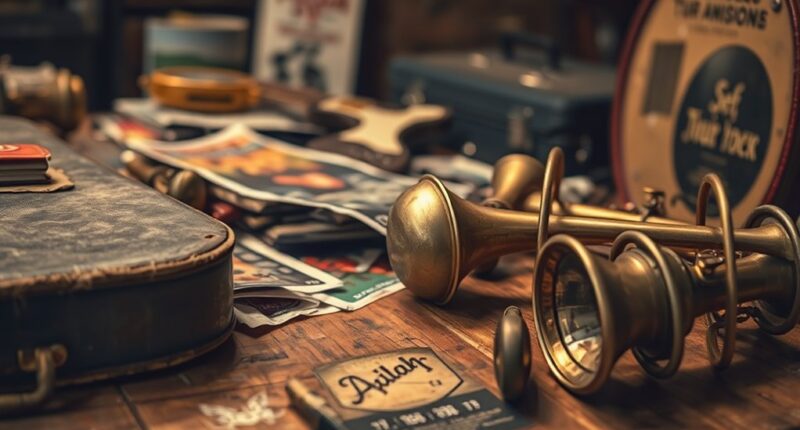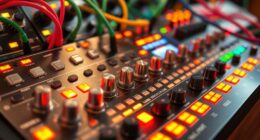Tour-used gear can be a rewarding investment if you carefully assess its authenticity, provenance, and condition. While it holds historical value and sentimental appeal, it can also turn into a money pit if you overlook wear signs, repairs, or environmental damage. Conduct thorough inspections and verify documentation before buying. As you explore the potential of tour-used gear, you’ll find tips to help you make smarter choices and safeguard your investment.
Key Takeaways
- Authentic tour-used gear offers historical value and potential appreciation but requires thorough verification to avoid fakes and misrepresented items.
- Wear and condition assessments are essential to determine authenticity and ongoing functionality, impacting long-term investment value.
- Used gear can be a worthwhile investment if properly inspected, maintained, and documented, but hidden damages pose financial risks.
- Poor condition, lack of warranty, or environmental damage can turn tour-used equipment into costly money pits.
- Careful research, expert advice, and regular maintenance are crucial to turning tour-used gear into a smart investment rather than a financial drain.
The Allure of Tour-Used Equipment: Why Collectors and Musicians Are Drawn In
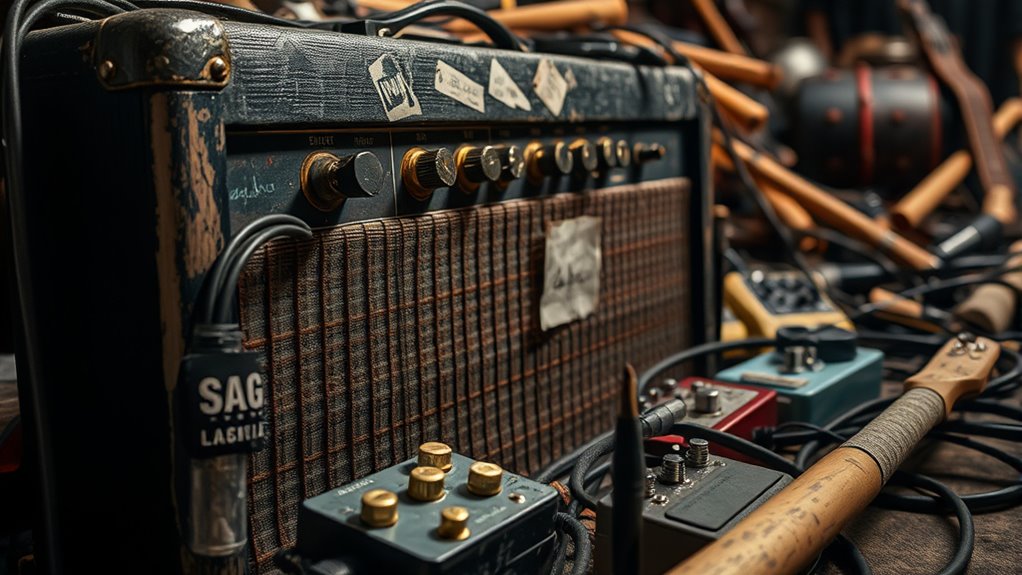
Many collectors and musicians are drawn to tour-used equipment because it carries a unique sense of history and authenticity. When you hold a piece that’s been on stage with your favorite band, you feel a direct connection to the music and the moments that took place during performances. Tour-used gear embodies stories, energy, and the spirit of live shows, making it more than just an instrument or piece of equipment. You’re often motivated by the thrill of owning something with a tangible link to rock history or a legendary artist’s journey. This sense of provenance adds sentimental value and makes the gear stand out from standard, store-bought items. It’s this blend of history, exclusivity, and personal connection that fuels the appeal of tour-used equipment. Additionally, understanding the value of provenance can help collectors assess the authenticity and worth of these items. Recognizing how authenticity influences perceived value can be crucial for both buyers and sellers in this niche market. Moreover, the condition of the gear can significantly impact its desirability and resale potential, making thorough inspection vital before making a purchase. A proper assessment of wear and tear can also reveal how the gear has been handled and maintained over time.
Assessing the Authenticity and Provenance of Tour-Used Gear
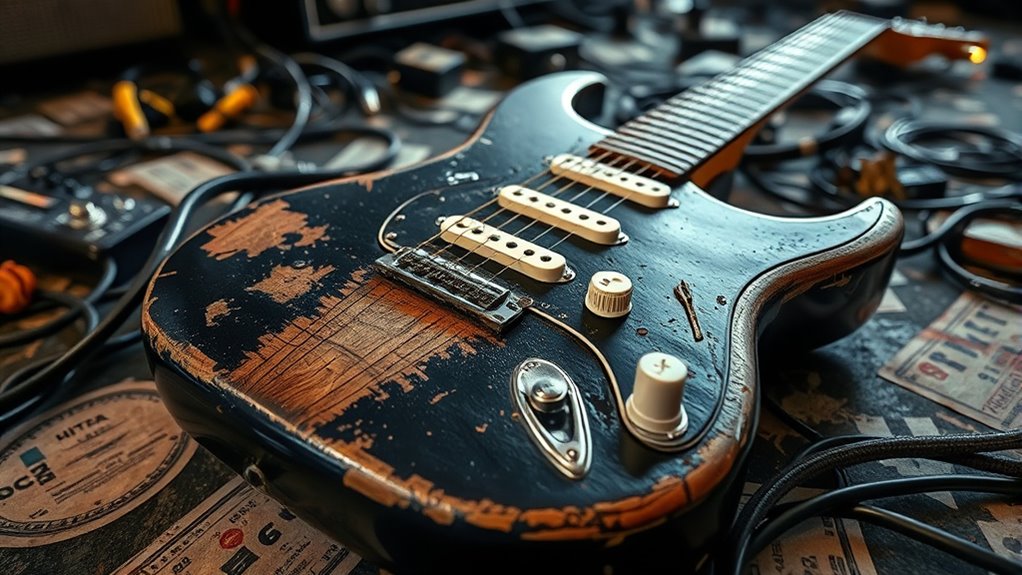
When verifying tour-used gear, you need to confirm its authenticity and origin to guarantee it’s genuine. Carefully examine signs of wear and historical details that match the item’s claimed use. This process helps you determine if the piece truly has the provenance you’re seeking.
Verifying Authenticity and Origin
Verifying the authenticity and origin of tour-used gear is essential for collectors and fans who want to guarantee they’re investing in genuine items. Start by examining official documentation, certificates of authenticity, and provenance records provided by reputable sources. Look for consistent branding, serial numbers, or holograms that match known manufacturer features. Research the item’s history through verified sales, auction results, or credible sources within the music memorabilia community. Be cautious of red flags like inconsistent branding, vague provenance, or suspiciously low prices. Consulting experts or appraisers with specialized knowledge can also help confirm authenticity. Remember, genuine tour-used gear typically comes with detailed provenance, making it easier to verify its origin and avoid counterfeit or misrepresented items. Additionally, verifying the hours of operation of relevant stores or services related to your gear can ensure smooth transactions and avoid last-minute surprises. Ensuring proper documentation and verifying the authenticity certificates can significantly reduce the risk of purchasing counterfeit items.
Assessing Wear and History
Examining the wear and overall condition of tour-used gear can reveal how it was handled during performances or travels, providing valuable clues about its authenticity. Look for signs of consistent use, such as scratches, fading, or worn edges, which indicate genuine handling. Pay attention to unique markings or repairs that might tell a story about its history. To assess its provenance, consider these factors:
- Consistency of wear with claimed usage and touring schedule
- Presence of original labels, tags, or serial numbers
- Evidence of repairs or modifications by authorized technicians
These details help verify whether the gear’s condition aligns with its supposed history, ensuring you’re investing in authentic, well-documented memorabilia rather than a replica or faked item.
Financial Considerations: When Does It Make Sense to Invest?

Deciding whether to invest in used tour gear depends on your budget, experience level, and long-term goals. If you’re just starting out, it’s wise to prioritize essential equipment over expensive, high-end pieces. For seasoned pros, investing in reliable gear can boost performance and reduce downtime. Here’s a quick comparison:
| Investment Level | When It Makes Sense |
|---|---|
| Budget-conscious | Focus on essentials, avoid high-cost upgrades |
| Long-term professional | Put resources into durable, high-quality gear |
If your goal is to grow your career or improve your sound, strategic investments can pay off. But always weigh the cost against potential benefits to ensure your investment aligns with your needs. Considering preppy dog names can add a touch of style and sophistication to your pet, much like choosing the right gear enhances your performance.
Risks and Downsides of Buying Tour-Used Instruments and Equipment
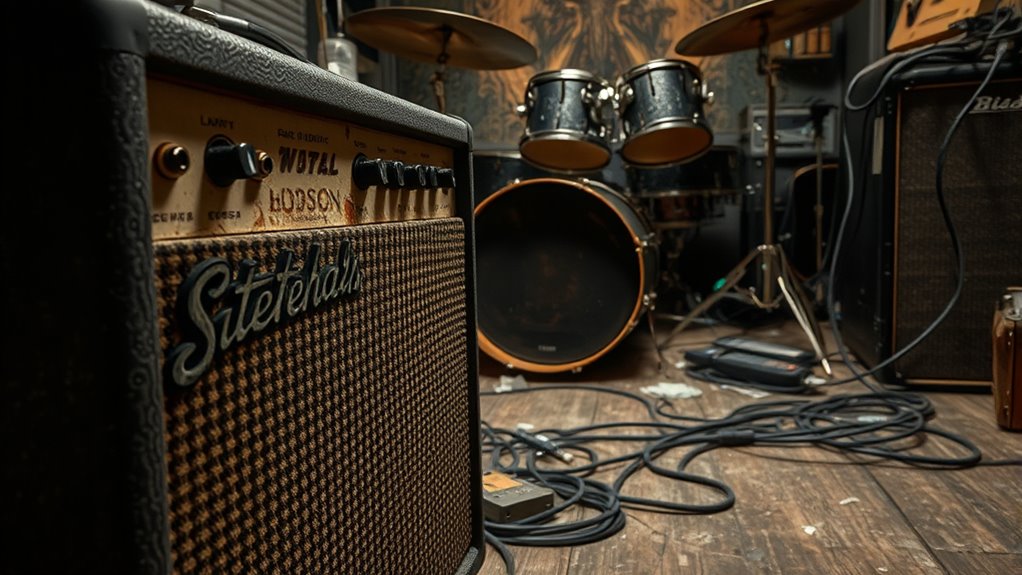
While buying used tour gear can save you money and offer access to high-quality equipment, it also comes with notable risks. You might encounter gear with hidden damage, wear, or faulty components that aren’t immediately visible. There’s also the chance of receiving equipment that’s incompatible with your setup or missing essential parts. Additionally, used gear often lacks warranties, leaving you responsible for repairs or replacements. Be aware that some sellers may not disclose issues, and negotiating prices can be tricky. Without proper inspection, you risk investing in equipment that could break down unexpectedly or perform poorly. Before buying, it’s vital to thoroughly check the gear’s condition and verify its functionality to avoid costly surprises down the line. Proper inspection techniques are essential to ensure you’re making a sound purchase. Cultural influences from Western media can also lead to purchasing items that may not suit local customs or environments. Moreover, understanding the digital privacy and security implications when dealing with online sellers can help protect your personal information during transactions. Recognizing the importance of authenticity verification can prevent falling victim to scams or counterfeit products.
Tips for Safely Purchasing and Caring for Tour-Used Gear
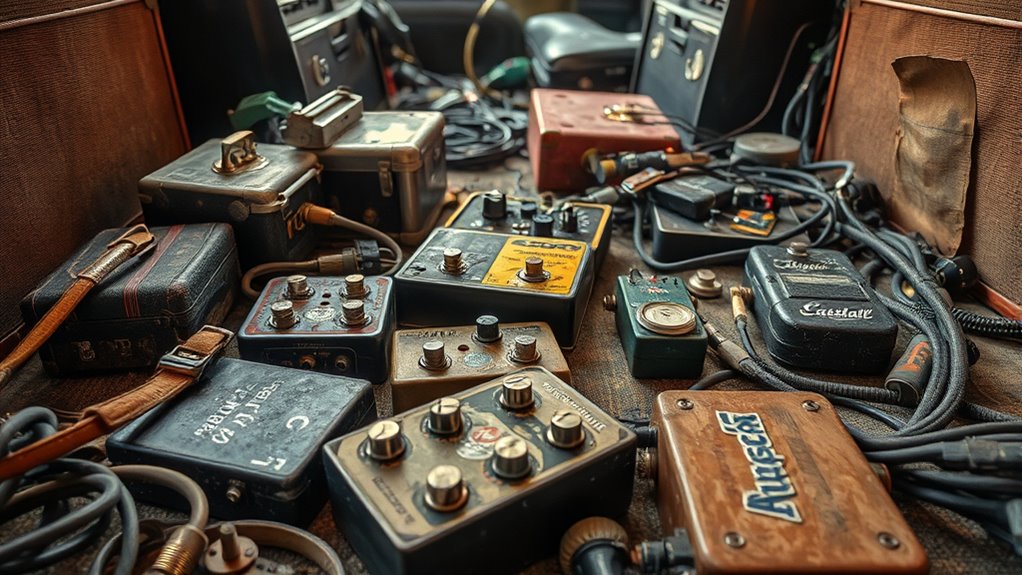
To safely purchase and care for tour-used gear, you should start by thoroughly inspecting the equipment before buying. Look for visible damage, corrosion, or worn parts that could indicate poor maintenance or heavy use. Test functionality whenever possible, especially on electronics and moving parts. Ask for detailed history or maintenance records to understand how well it was cared for. When handling the gear, clean and store it properly to prevent damage. Use protective cases and avoid exposing it to extreme temperatures or moisture. Regularly check for signs of wear, and perform necessary maintenance. Keep documentation of your purchases and maintenance routines. Proper inspection and care ensure your gear remains functional and retains its value, minimizing the risk of costly repairs or replacements down the line. Additionally, understanding the feature vulnerabilities of your equipment can help you better prepare for potential issues and extend its lifespan. Being aware of environmental factors that might affect your gear can also help in maintaining its longevity. Conducting regular preventive maintenance is essential for avoiding unexpected breakdowns and ensuring your gear performs reliably over time. Incorporating privacy policies into your routine can also help protect your personal information when purchasing or selling used gear online.
Making an Informed Decision: Is It Worth the Investment?

Is investing in tour-used gear worth it? It depends on your goals and budget. Before diving in, assess whether the gear aligns with your needs. Consider these factors:
- Cost savings compared to new equipment
- Potential wear and tear affecting performance
- Long-term value if you plan to upgrade soon
If the gear is well-maintained and suits your style, it can be a smart investment. However, if you’re unsure about its condition or future plans, it might turn into a money pit. Do your homework—check reviews, verify authenticity, and inspect carefully. Remember, not all used gear is created equal. Making an informed decision means weighing the benefits against possible risks, so you get the most out of your investment without regrets. Additionally, understanding the sound components involved can help you determine whether the gear will meet your specific needs in production. Ensuring the safety features are intact on electric heated mattress pads can prevent potential hazards and prolong the lifespan of the product. Conducting a thorough inspection process can reveal hidden issues and save you from unforeseen expenses later on.
Frequently Asked Questions
How Can I Verify the True Origin of Tour-Used Gear?
To verify the true origin of tour-used gear, start by asking for detailed documentation or provenance from the seller. Check for authenticity markings, serial numbers, or unique identifiers, and compare them with official records or manufacturer databases. Research the item’s history online, seek expert opinions if needed, and look for any signs of tampering or fake labels. Doing thorough research helps guarantee you’re getting genuine, verified tour-used gear.
What Are the Signs of Authentic Versus Fake Tour-Used Equipment?
When checking if tour-used gear is authentic, look for clear provenance, official certificates, and detailed seller descriptions. Authentic items often show signs of wear consistent with extensive use, and labels or engravings match official branding. Be cautious of overly cheap prices, inconsistent markings, or missing serial numbers. Do your research on the specific item, compare it with verified examples, and ask for provenance documentation to confirm you’re not buying a fake.
Does Owning Tour-Used Gear Increase Its Value Over Time?
Owning tour-used gear might seem like a ticket to instant fame, but it’s more like riding a rollercoaster with unpredictable twists. While some items can skyrocket in value if they’re legendary, most won’t turn into goldmines. Instead, you’ll find that their worth often plateaus or even drops faster than a rockstar’s career. So, think of it as a thrill ride—exciting, but not always a guaranteed investment.
Are There Specific Brands or Models More Desirable as Tour-Used Items?
When considering tour-used gear, certain brands and models stand out as more desirable. You’ll find that iconic brands like Gibson, Fender, and Marshall often hold their value better and attract collectors. Vintage models, limited editions, or instruments with a famous history also tend to be more sought after. If you’re looking to buy or sell, focusing on these popular and reputable brands can maximize your chances of getting a good deal.
How Should I Insure or Protect My Tour-Used Gear?
When insuring or protecting your tour-used gear, you should first document its condition with photos and detailed descriptions. Consider getting specialized insurance that covers theft, damage, and loss during tours. Keep your gear in secure, waterproof cases and use lockable hardware when traveling. Regularly maintain and inspect your equipment to catch issues early. By taking these steps, you guarantee your gear stays protected and ready for every performance.
Conclusion
In the end, buying tour-used gear feels like uncovering a rare piece of music history—sometimes a smart investment, other times a costly gamble. You might stumble upon a genuine treasure just when you least expect it, making the journey worthwhile. But remember, every piece has its story, and understanding that story helps you decide if it’s worth the price. After all, sometimes the most unexpected finds turn out to be your most meaningful musical keepsake.
